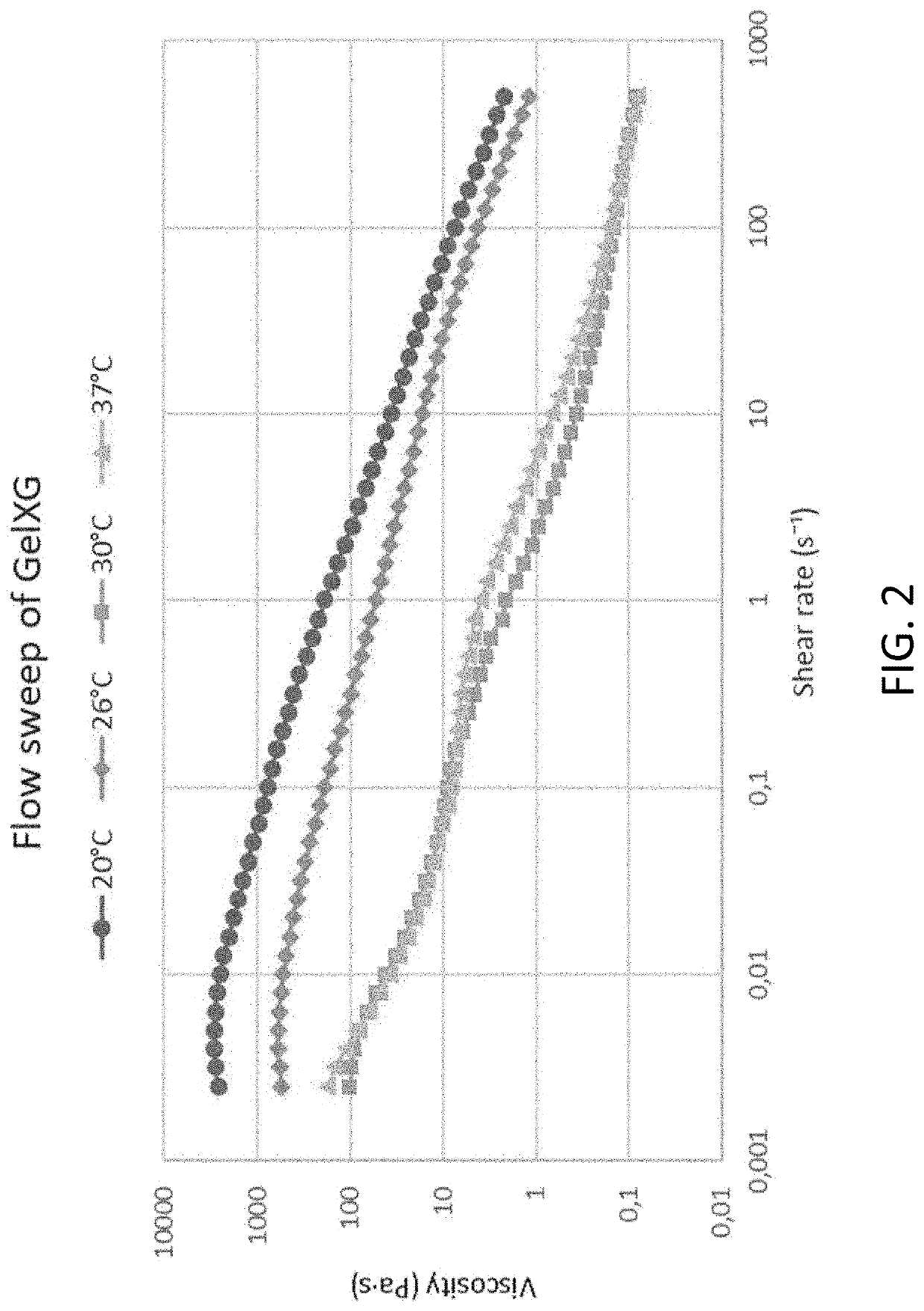Biogum and botanical gum hydrogel bioinks for the physiological 3D bioprinting of tissue constructs for in vitro culture and transplantation
- Summary
- Abstract
- Description
- Claims
- Application Information
AI Technical Summary
Benefits of technology
Problems solved by technology
Method used
Image
Examples
example 1
re Dependence of Viscoelastic Properties (GelXG)
[0205]The test was performed using a 20 mm plate-plate geometry (Discovery Hybrid Rheometer 2, TA instruments, UK), starting at 33° C. and finishing at 15° C. The test is run at a constant angular frequency of 10 rad / s. Average values, from two replicates, of the storage modulus G′, loss modulus G″ and tan 8 are presented in FIG. 1.
example 2
Analysis (GelXG)
[0206]The test was performed using a 20 mm plate-plate geometry (Discovery Hybrid Rheometer 2, TA instruments, UK). The flow sweep was performed at four temperatures: 20° C., 26° C., 30° C. and 37° C., at shear rates ranging from 0.002 s−1 to 500 s 1. The flow sweeps are compared in FIG. 2.
example 3
s of Cross-Linked Samples (GelXG)
[0207]The tests were performed using an 8 mm serrated plate-plate geometry (Discovery Hybrid Rheometer 2, TA instruments, UK). A frequency sweep was performed between 0.16 Hz and 6.3 Hz, the storage modulus, loss modulus and complex viscosity were plotted. Thereafter, an amplitude sweep at a frequency from the linear region of the storage modulus was performed at the same sample. All tests were performed at 20° C., on 3D printed samples (diameter=8 mm, height=2 mm) which, had been cross-linked with UV (405 nm) for 20 s. FIG. 3 shows the results from the frequency sweep of UV cross-linked GelXG and FIG. 4 shows the results from the amplitude sweep of the same GelXG sample.
PUM
| Property | Measurement | Unit |
|---|---|---|
| Temperature | aaaaa | aaaaa |
| Temperature | aaaaa | aaaaa |
| Pressure | aaaaa | aaaaa |
Abstract
Description
Claims
Application Information
 Login to view more
Login to view more - R&D Engineer
- R&D Manager
- IP Professional
- Industry Leading Data Capabilities
- Powerful AI technology
- Patent DNA Extraction
Browse by: Latest US Patents, China's latest patents, Technical Efficacy Thesaurus, Application Domain, Technology Topic.
© 2024 PatSnap. All rights reserved.Legal|Privacy policy|Modern Slavery Act Transparency Statement|Sitemap



